KUser/it: Difference between revisions
(Created page with '== Utenti ==') |
(Created page with 'Facendo doppio clic su un utente si apre una finestra di dialogo con diverse schede. Il numero delle schede è variabile a seconda del tipo di sistema di gestione degli utenti e ...') |
||
| Line 28: | Line 28: | ||
== Utenti == | == Utenti == | ||
Facendo doppio clic su un utente si apre una finestra di dialogo con diverse schede. Il numero delle schede è variabile a seconda del tipo di sistema di gestione degli utenti e se vengono utilizzate le quote. | |||
==== User Info ==== | ==== User Info ==== | ||
Revision as of 13:33, 15 September 2010
 |
KUser è uno strumento per gestire utenti e gruppi sul tuo sistema |
{{{4}}}

Puoi fare clic sulle immagini per vederle a dimensione intera. Poi per ritornare su questa pagina devi utilizzare il pulsante torna indietro del browser.
Informazione
Caratteristiche
- Aggiunta/modifica/rimozione utenti
- Aggiunta/modifica/rimozione gruppi
- Gestione password
Installazione
Kuser di solito non è installato in modo predefinito, deve quindi essere installato manualmente. KUser fa parte del pacchetto kdeadmin.
Una volta installato puoi trovarlo sotto il o avviarlo tramite KRunner keycap>(Alt+F2)</keycap> digitando
kuser
.
Utilizzare KUser
Avviato KUser si apre una finestra contenente due schede: e .
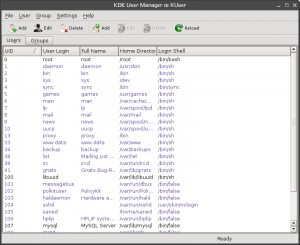
Utenti
Facendo doppio clic su un utente si apre una finestra di dialogo con diverse schede. Il numero delle schede è variabile a seconda del tipo di sistema di gestione degli utenti e se vengono utilizzate le quote.
User Info
- Modify the user-properties like , , or set/change a for example. You can also .
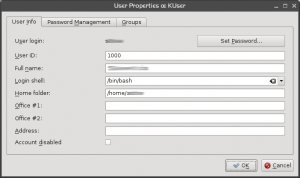
Password Management
- Change password settings, like the time after which a password has to be changed, or set a time at which an account will expire.
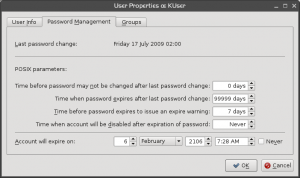
Groups
- Add or remove groups the user belongs to.
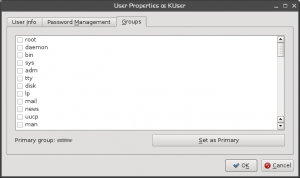
Groups
Double clicking a opens a dialog, where you can of the group and to/from a group.
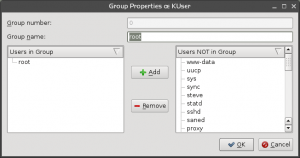

Warning
Be careful deleting anything, as it can harm your system seriously!
Configure KUser
Click and you can set up defaults for creating a new user:
General
- set the , the or the .
- choose if a will be created and if a (standard configuration files) will be copied to the home folder.
- set a , which creates a own personal group when a user is added and removes it, when the user is removed.
- set a .
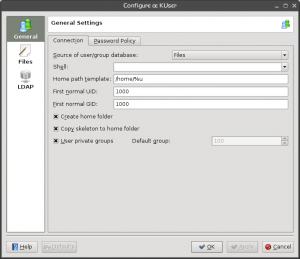
Files
- set default paths for password, group file, password shadow file and group shadow file.
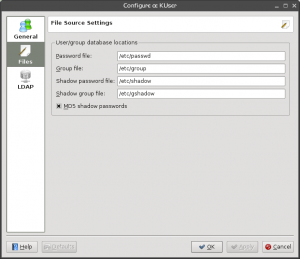
LDAP
- set preferences for users in a local network
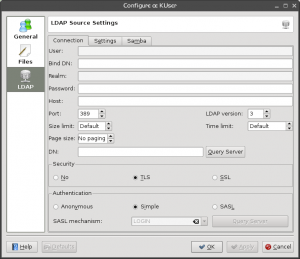

Tip
In most cases you won't have to change the default settings, as they are sufficient for most users.
More Information
- KUser Manual (it is from KDE3 Days, but still valid)
